
When I made my full SRPG game list I included Atelier games, which caused some comment — they are not Strategy RPGs, certainly, but I would consider at least the earlier ones to be Simulation RPGs. Plus I like the series so I put it on there so I could play more of the games.
The long running series began in 1997 and currently has 23 main titles and around 15 side games, plus a number of remakes. The first five games are primarily simulation games where you control a young alchemist trying to achieve some mild goal (like pass an exam or bring prosperity to your village). There is usually a basic “good” ending that’s quite easy to get, and then a number of other endings that are more difficult. As the series progressed, they put more and more RPG elements in — by A5 (Viorate) you had explorable dungeons, a complicated weapon and armor crafting system, and five different bosses. However, the game could still be completed without doing much of this, and the focus was on running a store and crafting items.
A6 (Iris) was a straight RPG (with a crafting system), and the next 4 games after that continued that trend. I first played the series when Iris had just come out, and there was a lot of uncertainty whether the series would ever return to the simulation roots.
But A11 (Rorona) did go back to the earlier style, although the RPG elements seemed more prominent. I haven’t played anything past A13 (Meruru) but from what I hear the RPG elements have become more and more dominant as the series has progressed.
The side games include some games that aren’t RPGs or simulation games, but also a few games for Nintendo portable systems that look like they may be the more traditional games.
I am at least going to post about A1-A5 when I get to them, but after that it will depend on how I feel and what kind of game they are. I’ve already played Marie and gotten all the endings, so I won’t be replaying it here, but I’ll write a bit about it.
Atelier Marie (マリーのアトリエ~ザールブルグの錬金術士~), released 1997/5/23, developed by Gust
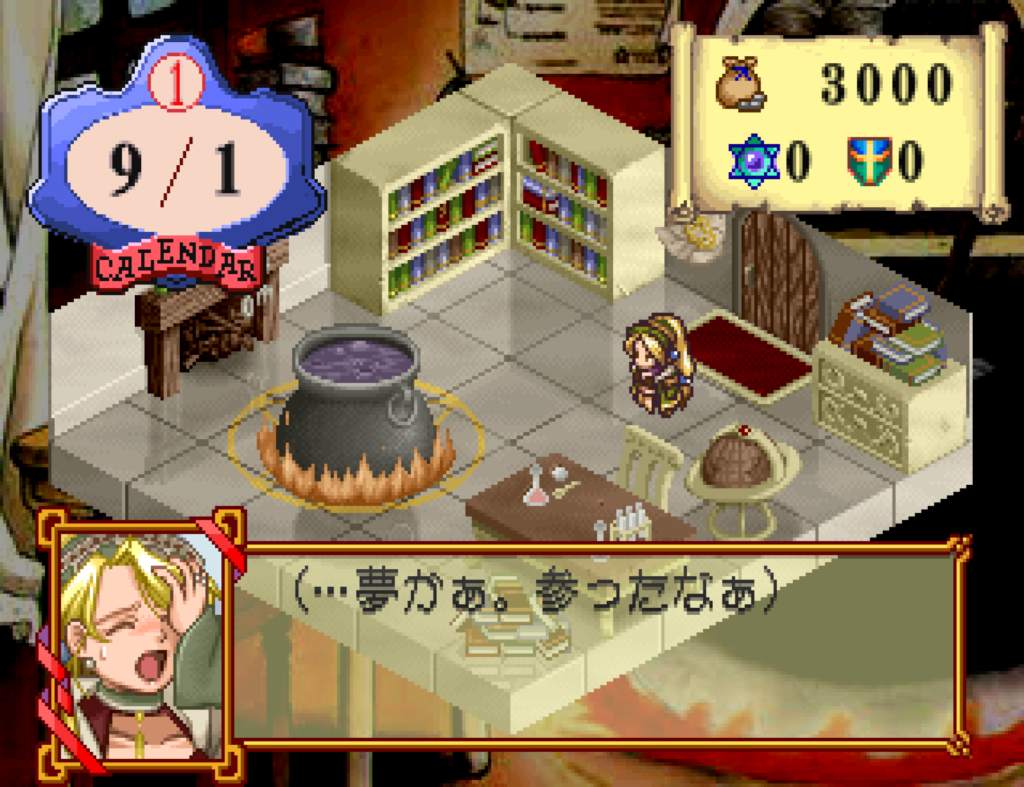
The first game in many ways is a tentative beginning for the series — if you’ve played any of the later games almost everything is in a very simple form, which perhaps makes it a good starting game? Apparently the game was originally planned as an SRPG but the director thought that there were too many big name RPGs already out there, and so decided on a new type of game. The game was regarded as a side project for the company but it was so popular that it quickly became Gust’s main product.
The main character is Marlone (nickname Marie), a not-so-great student of the alchemy school in Zalberg. Apparently a normal girl was chosen as the main character because the developers felt that women were starting to play games more — the female main character became a mainstay of the series. Marie’s on her last chance at the school, and she has five years to make a good item so that she can pass the exam and graduate.
This imposes a 5 year time limit on the game. One of the core elements of the early games is the time limit; everything you do takes time, and part of the game is learning to use your time wisely. (I’ve heard that recent games have gotten rid of the time limit; I’m sure this is more popular among casual players but it’s a bit disappointing.)
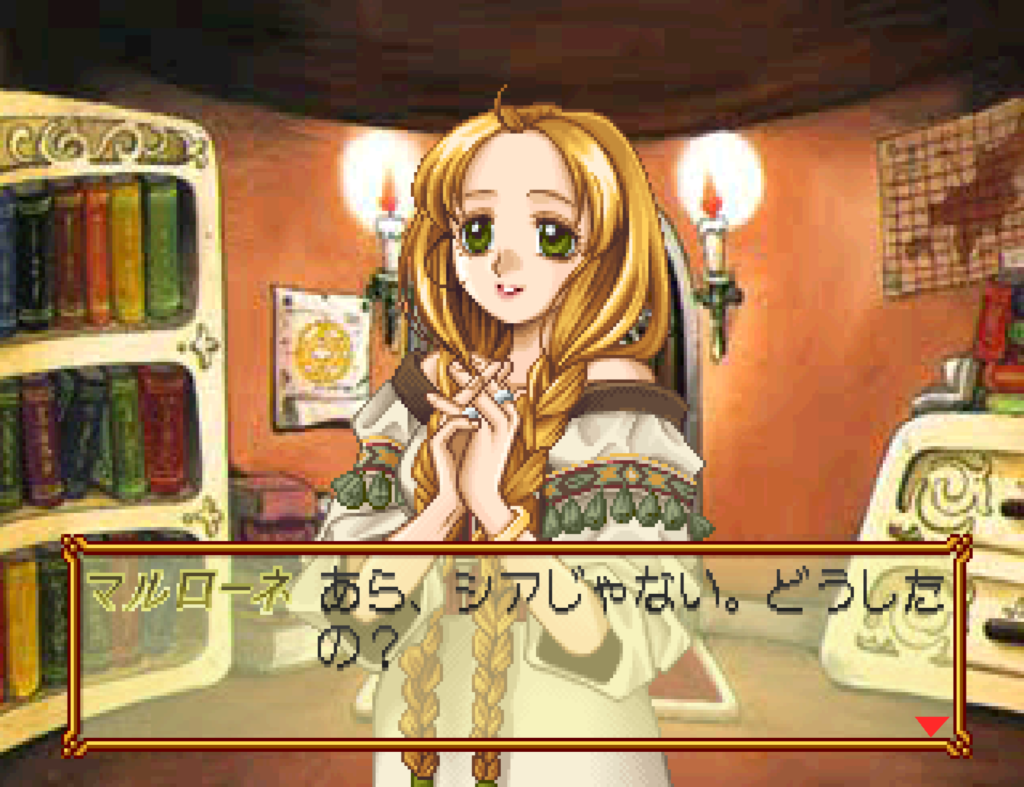
The dialogue is fully voiced, and the graphics are quite nice. The music is also exceptional; I place Gust second only to Falcom for consistent high quality music in almost every game they release.
The game has no real story. There are some characters like Schia (above), Kreis (a good student at the academy), Ruven (an adventurer), and others. Many of them can join your party for a price to help you out when you adventure outside of the town. They also have some events and small story events, but nothing much.
Basically everything in the game is optional. There are several endings — the basic ending is to craft a level 4 item to pass the exam. This is quite easy and can be done even if you barely know what you are doing. But the fun of the game is that you can replay to try to get some of the other endings — there’s one for levelling Marie to 50, one for beating an optional boss, one for crafting all items, etc.
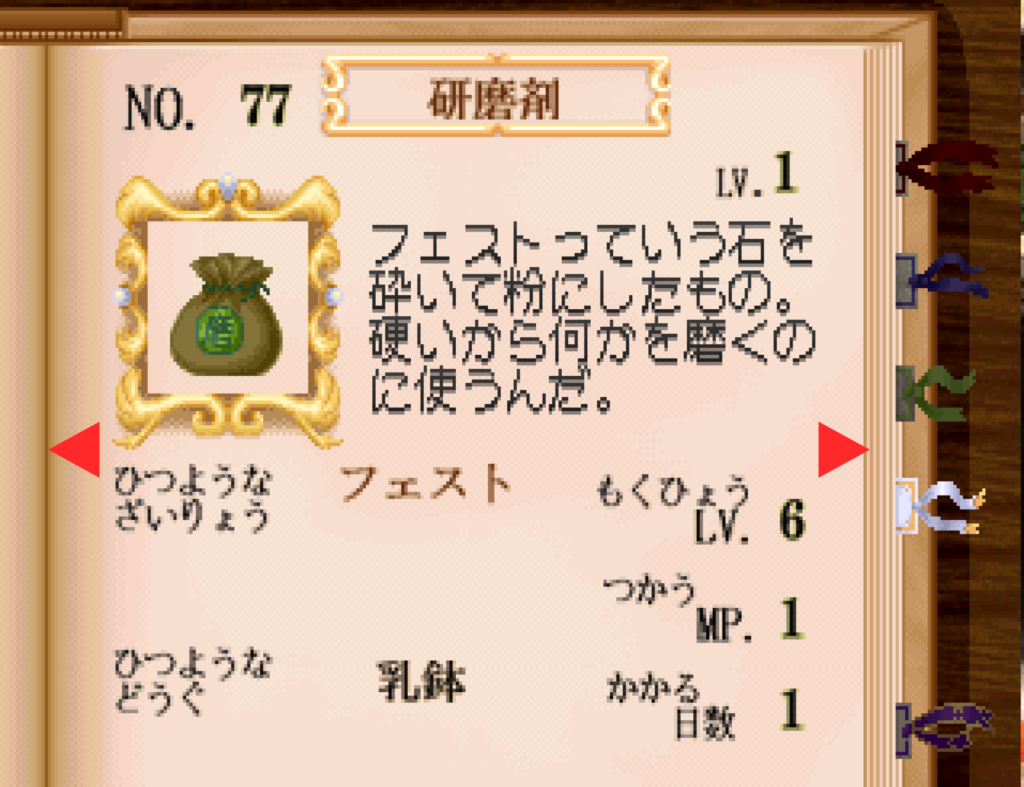
The core of the game is the item crafting. Marie can learn recipes for items, and then if she has the right ingredients, she can craft them. The difficulty and time it takes depends on Marie’s level — unlike later games there is no separate alchemy and adventurer level; you gain XP for crafting items and for killing monsters. Marie can also buy tools that will either be necessary for the crafting, or make it less likely she will fail.
Later games introduce more complexity to the crafting system, but in Marie you just combine the ingredients into the final item.

How does Marie get the items? Two ways — she can either buy them, or she can go out to the field and collect the items. Buying items of course requires money; the main way to get money is to take jobs at the pub. By turning in certain items Marie will receive money. However, it’s also necessary to get some items by leaving town.
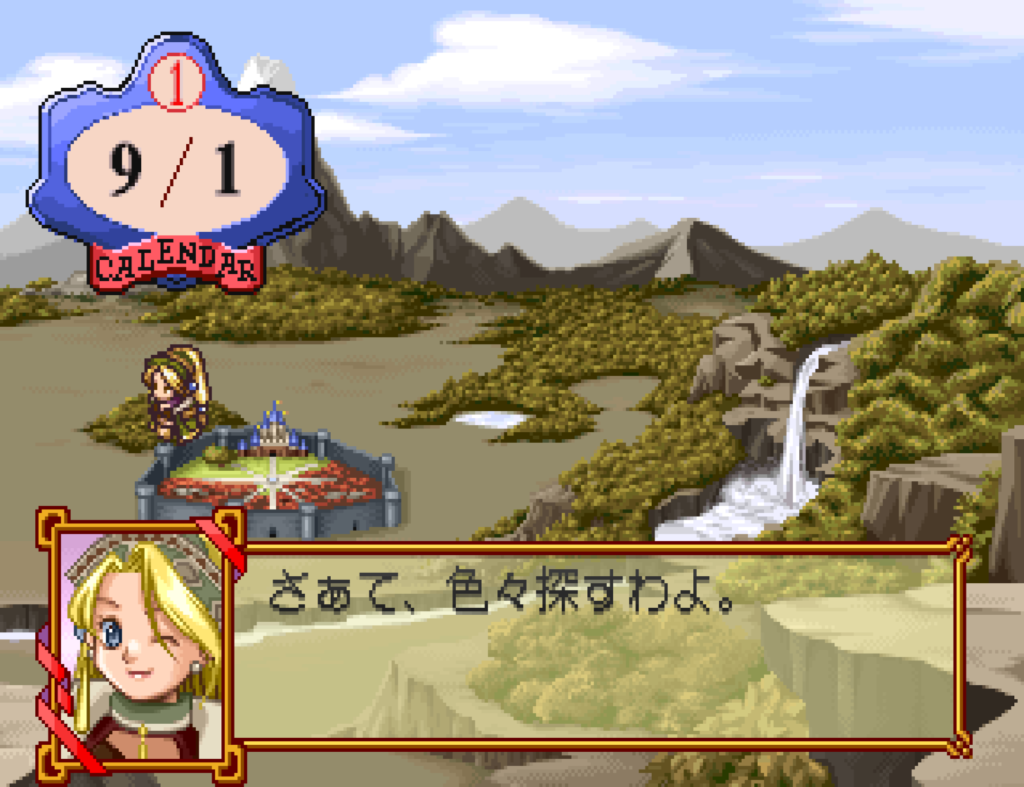
At the start of the game Marie can only access a few locations close to the town, but as the game progresses you gain access to more areas with rarer items. When you reach a location, you simply press the circle button to search for items, which costs a day.
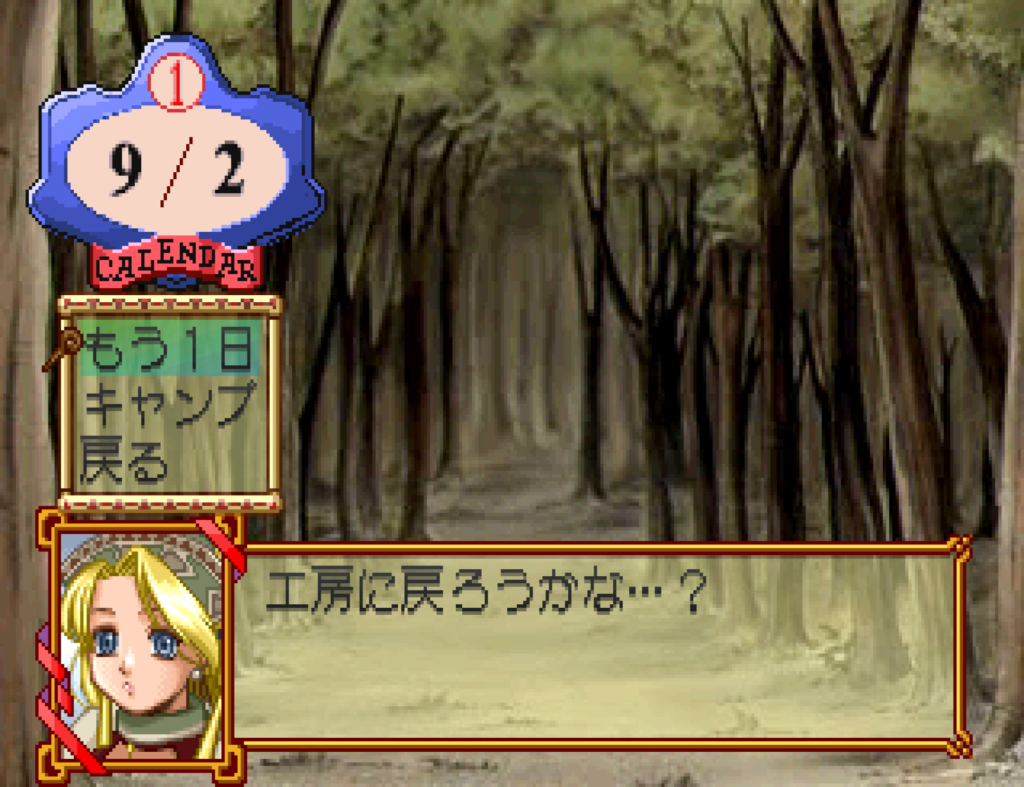
You may also encounter monsters.
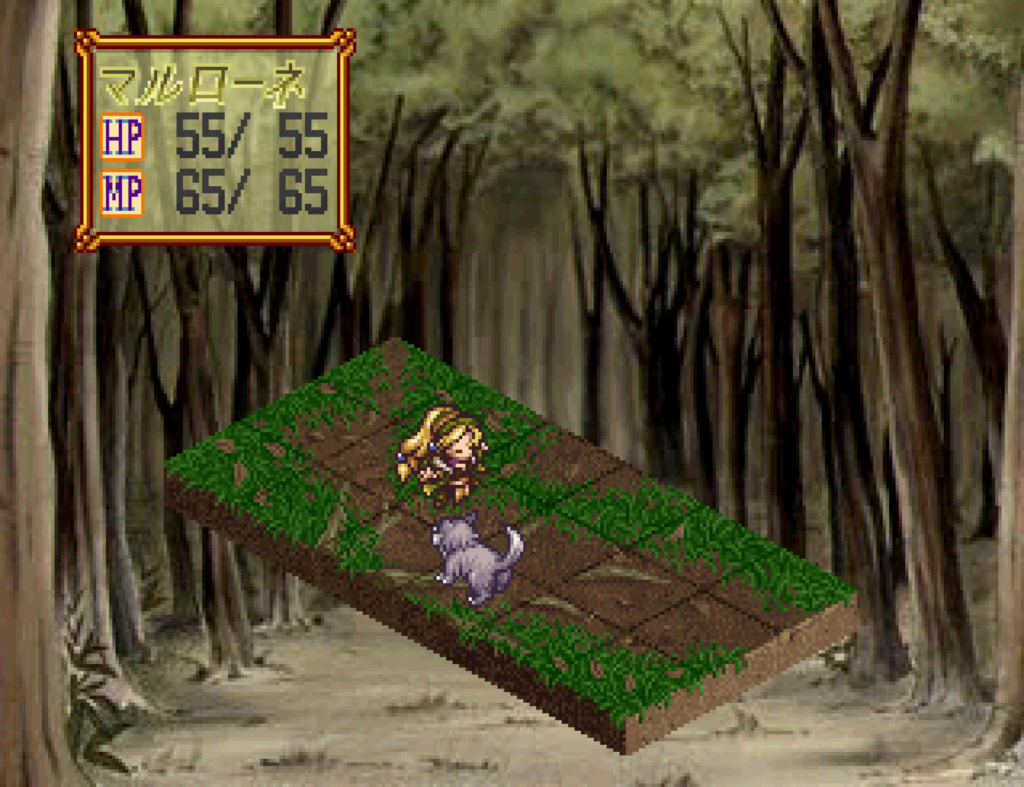
The battle system is very basic; characters can attack, use a special move, and Schia and Marie can use attack or healing items. Marie by herself will die (at least at the beginning) so you need to hire some adventurers (which costs money).
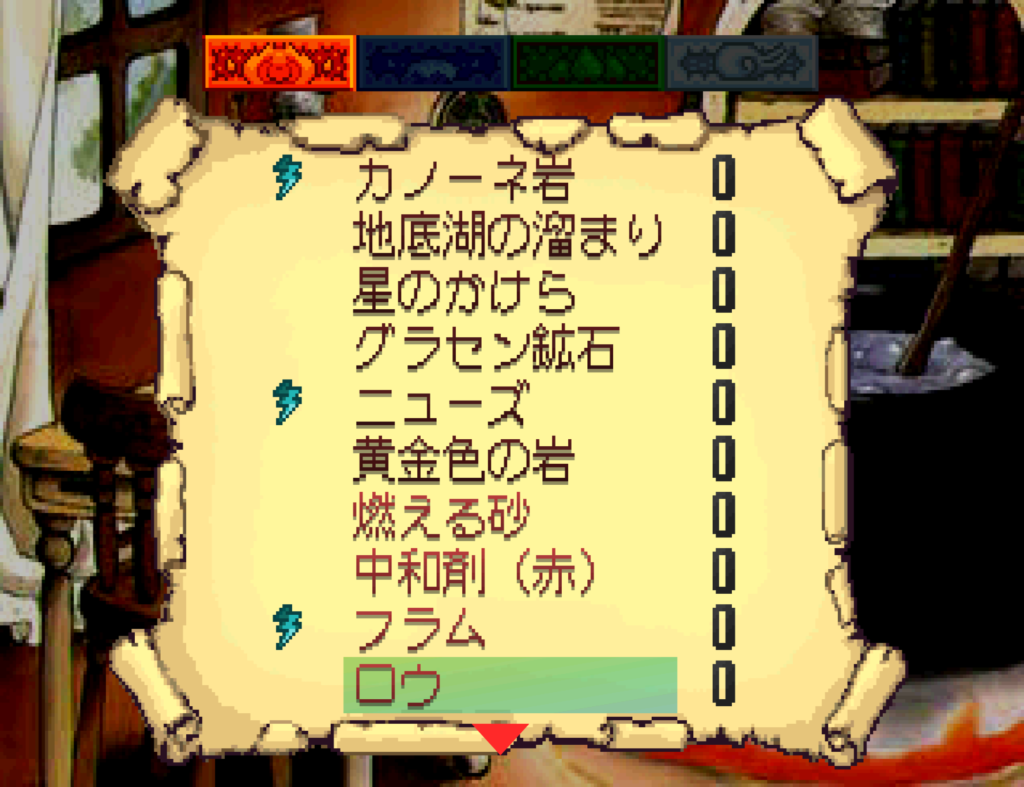
So the game is essentially a loop of taking jobs for money, getting the items to craft, buying new books to learn how to make items, and activating events — some events open up when you pass a certain time, and others are only available for a certain time each year.
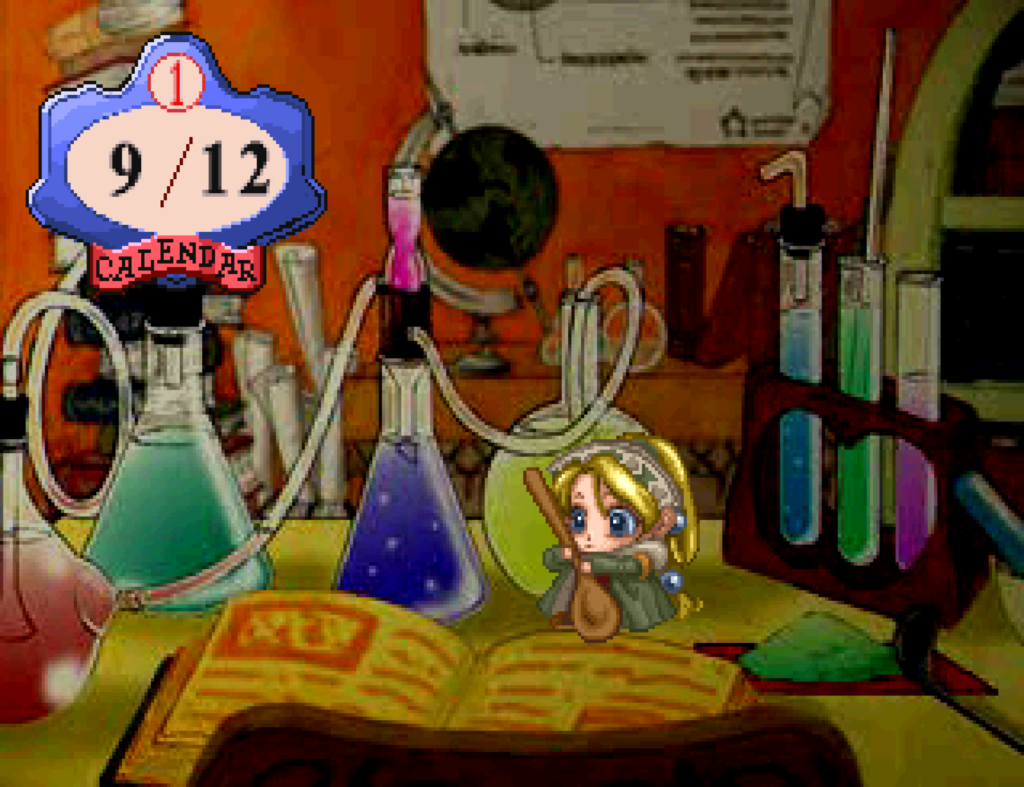
As I said above, even if you have no real idea what you’re doing, you can easily get the basic ending — as long as you can read the game’s text you would have to try to fail, I think. The extra endings are more difficult but not to a great degree. I was able to get all the endings in one playthrough with just a list of the endings and some information on a few events that activated at certain times. But there was something fun about the simplicity of the game.
The game was later released for Saturn as “Atelier Marie 1.3” with one additional ending and some new events, and some minor things based on the Saturn’s internal clock (like if you play the game on Christmas she’ll wish you Merry Christmas). This version was then ported to the PSX as Atelier Marie Plus, which is the version I played. There’s a later release for Game boy, and then a combination release for PS2 of Marie and Elie. You would think that’s the definitive version of the game, but the designers made the bizarre decision to get rid of the 図鑑, a place in the main menu that shows you all of the items you’ve crafted, monsters you’ve found, and endings you’ve gotten.
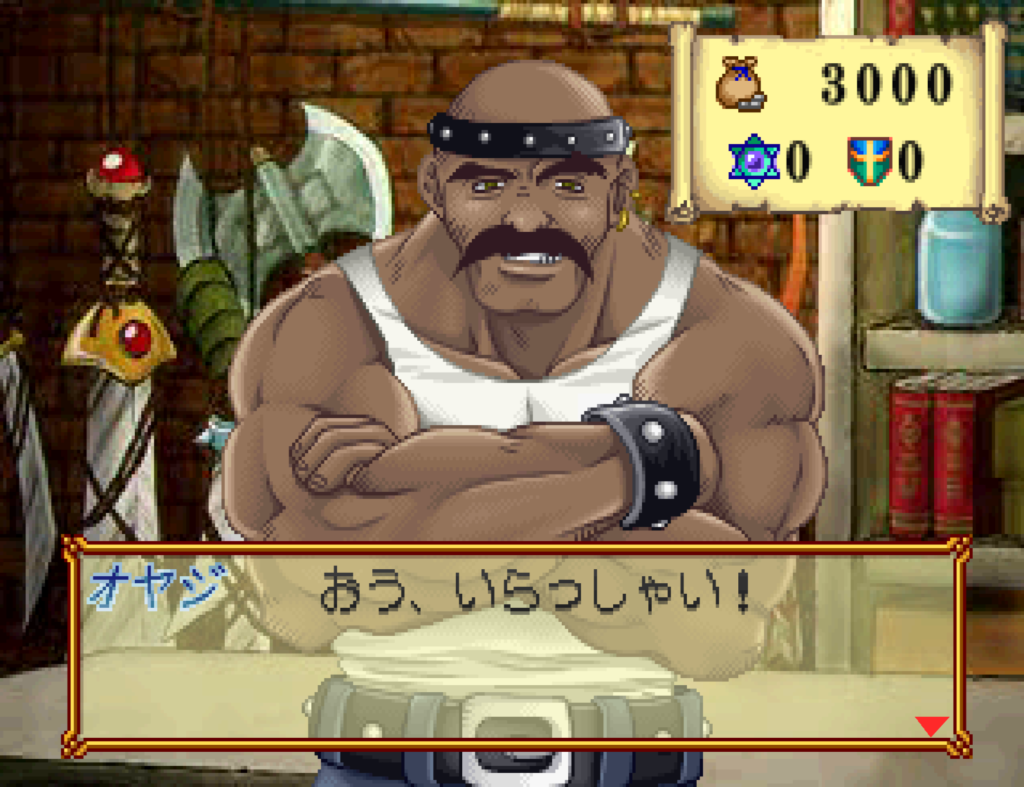
The next game for the series is Atelier Elie which came out in 1998, which I have not played.
As I mentioned last week I’m in a busy part of the fall. Next week will most likely be a quick post on Final Fantasy Tactics, and then hopefully I will have finished Seiken Densetsu 3 by the following weekend.
This is a very pretty looking game! I can see why the series took off.
Re: SD3, are you doing all three “main” stories, or is it just taking longer than expected?
It’s just taking longer. Several things came up right next to each other where I can’t play games for a 4-6 day period. Should be back to normal after next week.
I played Atelier Iris back in the day, at that time unaware that it was part of a series (although apparently the games before it were quite different). I’ve always meant to take a closer look at the series. Looking forward to learning more about its origins.
I feel like “I like the game series so even if it doesn’t strictly fit the genre definition I’m going to blog about it” is a very good policy to have. You’ve certainly played enough dumpster fires over the years to warrant the choice!
While I haven’t played any of the titles, your description of it reminds me of several games I have played. Seems like its influence has been wide over the years.
Really really good game even if simple, it was my first Atelier game, and yes the game is really really good. 🙂
The removal of the extra menu with the endings and such made me wonder if fan translators made a mistake in patching the PS2 version, but it seems they were able to add it back in.
Oh, that’s neat! I didn’t know about that patch, but here it is:
https://ateliertraduction.forumgaming.fr/t31-release-of-the-atelier-marie-elie-s-english-patch-on-ps2